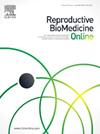Artificial intelligence in assisted reproductive technology: separating the dream from reality
IF 3.7
2区 医学
Q1 OBSTETRICS & GYNECOLOGY
引用次数: 0
Abstract
This paper critically reviews the role of artificial intelligence (AI) in assisted reproductive technology (ART), a nascent field that has emerged over the last decade. While AI holds immense promise for enhancing IVF efficiency, standardization, and outcomes, its current trajectory reveals significant challenges. Much of the recent literature presents variations on established methodologies rather than groundbreaking advancements, with many studies lacking clear clinical applications or outcome-driven validations. Moreover, the growing enthusiasm for AI in ART is often accompanied by undue hype that obscures its realistic potential and fosters inflated expectations. Despite these limitations, AI-driven innovations such as advanced image analysis, personalized protocols, and automation of embryology workflows are beginning to show value. Machine learning algorithms and robotics may help address inefficiencies, alleviate staff shortages, and improve decision-making in the IVF laboratory. However, progress is tempered by drawbacks including ethical concerns, limited transparency in AI systems, and regulatory impediments. Data-sharing barriers in our field hinder AI tool development significantly. Energy-intensive computational processes and expanding data centers also raise sustainability concerns, underscoring the need for environmentally responsible development. As the field evolves, it must emphasize rigorous validation, collaborative data frameworks, and alignment with the needs of ART practitioners and patients.
辅助生殖技术中的人工智能:将梦想与现实分离
本文批判性地回顾了人工智能(AI)在辅助生殖技术(ART)中的作用,这是过去十年出现的一个新兴领域。虽然人工智能在提高试管婴儿效率、标准化和结果方面有着巨大的希望,但其目前的发展轨迹显示出重大挑战。最近的许多文献呈现的是对既定方法的变化,而不是突破性的进展,许多研究缺乏明确的临床应用或结果驱动的验证。此外,对人工智能在ART领域日益增长的热情往往伴随着不适当的炒作,掩盖了其现实潜力,并助长了过高的期望。尽管存在这些限制,人工智能驱动的创新,如先进的图像分析、个性化协议和胚胎学工作流程的自动化,已经开始显示出价值。机器学习算法和机器人技术可以帮助解决试管婴儿实验室的效率低下,缓解人员短缺,并改善决策。然而,人工智能技术的进步受到伦理问题、人工智能系统透明度有限以及监管障碍等问题的制约。我们领域的数据共享障碍严重阻碍了人工智能工具的发展。能源密集型计算过程和不断扩大的数据中心也引起了对可持续性的关注,强调了对环境负责任的发展的必要性。随着该领域的发展,它必须强调严格的验证、协作数据框架以及与抗逆转录病毒治疗从业者和患者的需求保持一致。
本文章由计算机程序翻译,如有差异,请以英文原文为准。
求助全文
约1分钟内获得全文
求助全文
来源期刊

Reproductive biomedicine online
医学-妇产科学
CiteScore
7.20
自引率
7.50%
发文量
391
审稿时长
50 days
期刊介绍:
Reproductive BioMedicine Online covers the formation, growth and differentiation of the human embryo. It is intended to bring to public attention new research on biological and clinical research on human reproduction and the human embryo including relevant studies on animals. It is published by a group of scientists and clinicians working in these fields of study. Its audience comprises researchers, clinicians, practitioners, academics and patients.
Context:
The period of human embryonic growth covered is between the formation of the primordial germ cells in the fetus until mid-pregnancy. High quality research on lower animals is included if it helps to clarify the human situation. Studies progressing to birth and later are published if they have a direct bearing on events in the earlier stages of pregnancy.
 求助内容:
求助内容: 应助结果提醒方式:
应助结果提醒方式:


